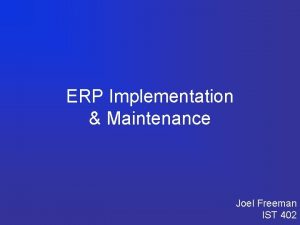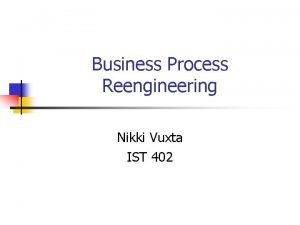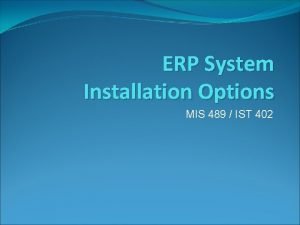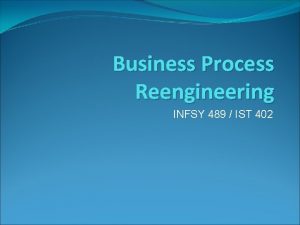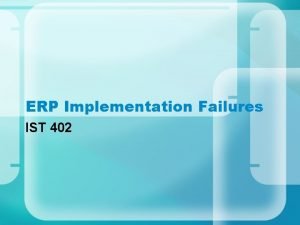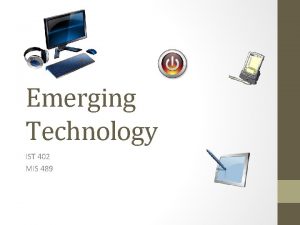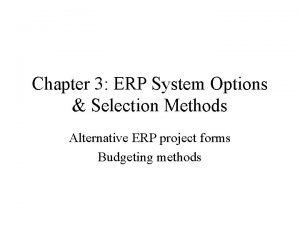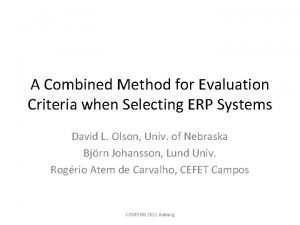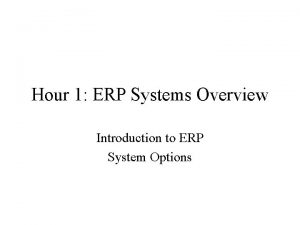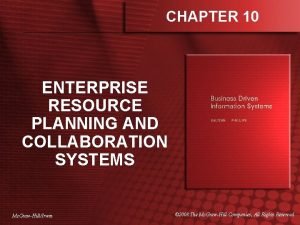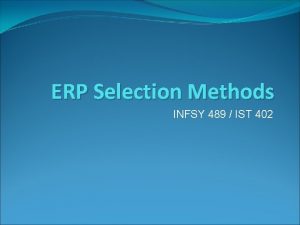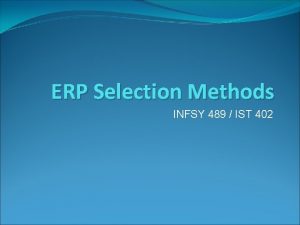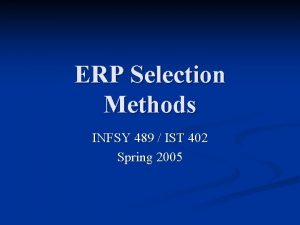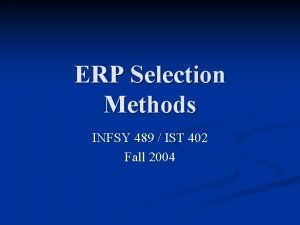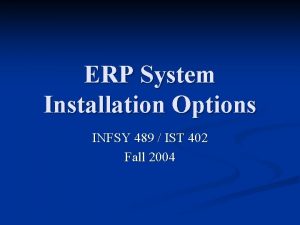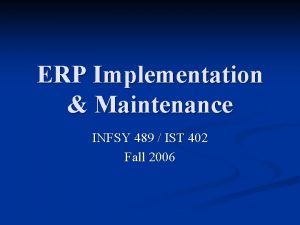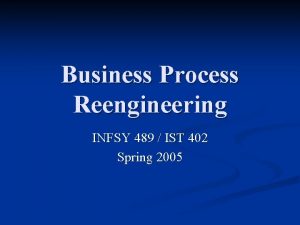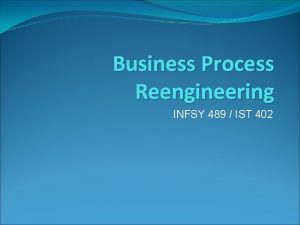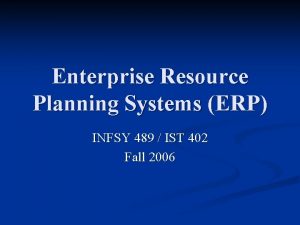ERP Selection Methods INFSY 489 IST 402 Spring












- Slides: 12

ERP Selection Methods INFSY 489 / IST 402 Spring 2005

How to Develop an ERP Adopt only a few ERP modules from a vendor Rent and ERP product From an application Service provider Adopt a vendor product completely Customize a vendor product Develop an ERP In-house

Measurement of Project Impact Information Systems projects are often difficult to justify solely based on concrete monetary benefits n Cost-Benefit Analysis includes n n Intangible Factors: n Increased market share n Improved customer service n Better corporate image n Improved employee satisfaction

Measurement of Project Impact n Large IT projects often change organizational power Change the communication structure n Experienced employees may feel threatened by new system n Change work roles making some workers feel less productive n

Information Technology Selection Hinton and Kaye surveyed 50 members of a professional organization to identify how IT projects were selected n Treated IT projects as: n Capital investment using cost-benefit analysis to establish profitability – general practice n Revenue-related project expected to benefit organizational goals n

Information Technology Selection n Most commonly cited justification for IT projects: Reduction in expenses, i. e. Payroll n Accomplishing a strategic objective n n IT projects involve multiple risks n Most important being abilities of project manager

Evaluation Techniques n Cost-Benefit Analysis Accurate measurement of the benefits and costs in monetary terms of project n Uses the ratio benefits/costs n

Evaluation Techniques n Net Present Value Uses present value of the cash flows expected from a proposal n If the present value of the net cash flow expected from a proposed investment, at the selected rate, equals or exceeds the amount of the investment, the proposal is desirable n

Evaluation Techniques n Payback n Identify cumulative net cash flow and identify how long it will be before it turns positive

Evaluation Techniques n Value Analysis Used when projects’ benefits are heavily intangible n Separate the benefits measured in intangible terms from costs n Present decision maker with the intangible comparisons in performance n Are the improvements provided by the new system worth the price? n

Evaluation Techniques n Multiple Objectives Profit n Minimize Risk n Develop markets n Capital replenishment n Labor policies n These items pose conflicts for decision makers in today’s businesses n

Evaluation Techniques n SMART (Simple Multiattribute Rating Technique) Considers benefits of a system on a variety of scales without converting them to a common scale like dollars n Provides a means for decision makers to quantify their preferences n Scores and Weights are used to compute a Value Score on each project n

